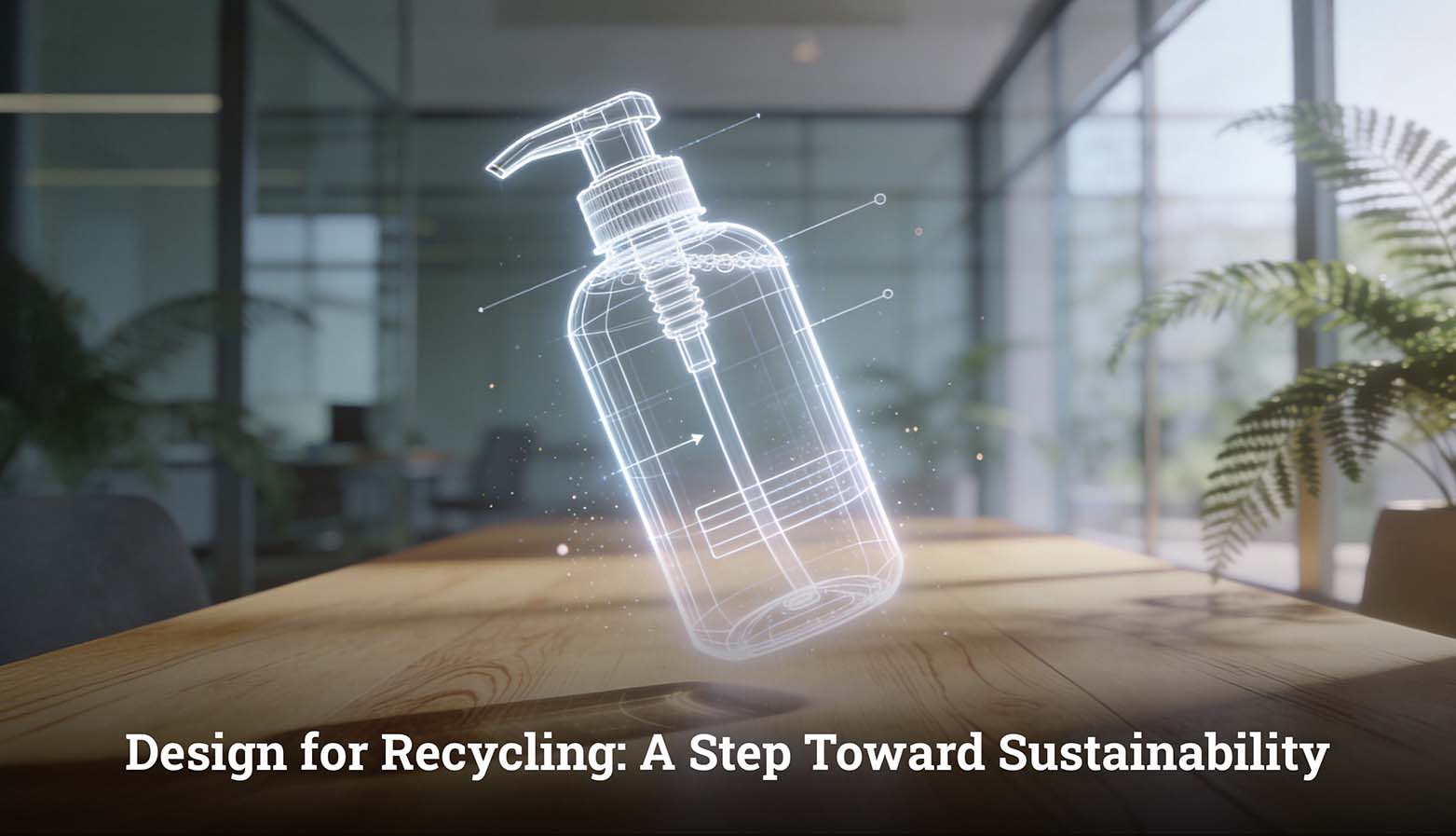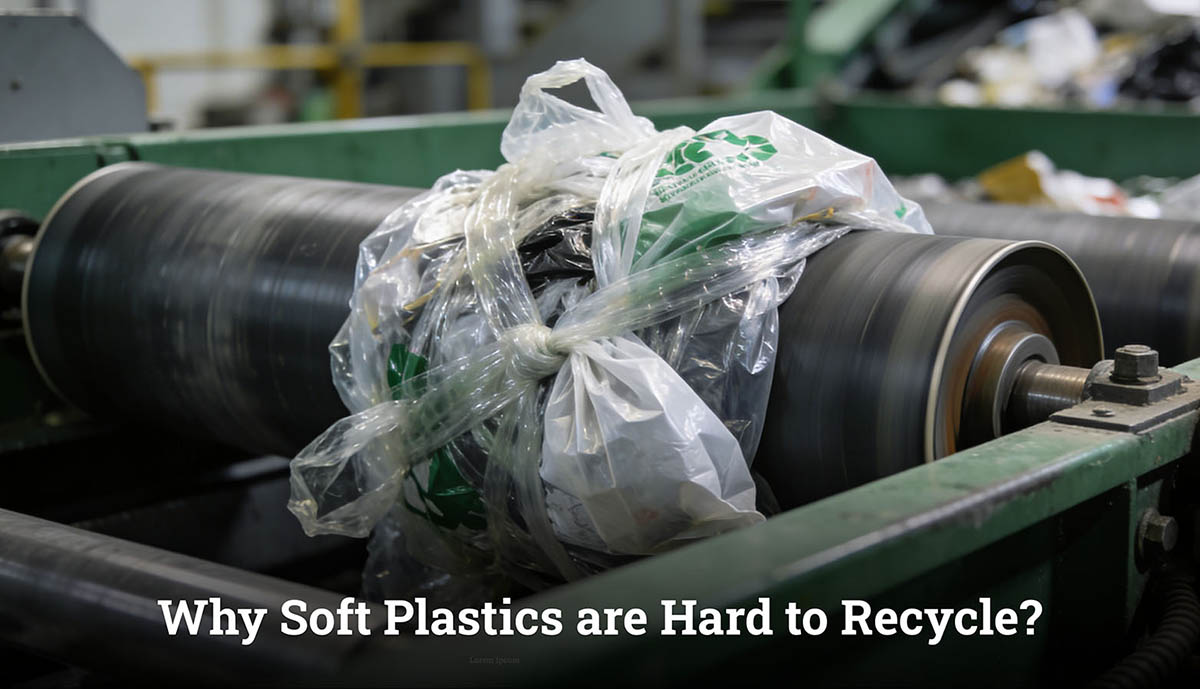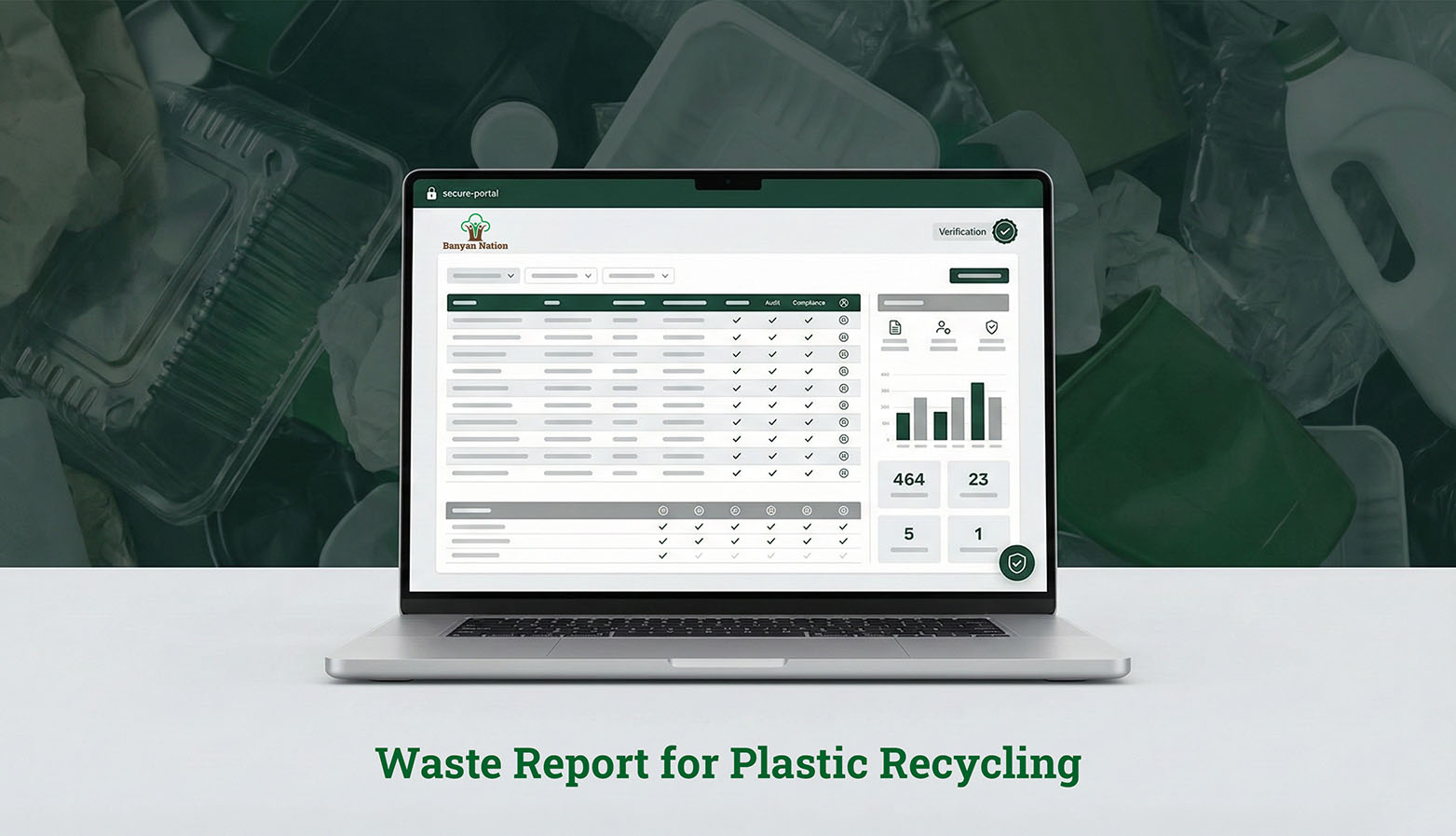Introduction
The global consumption of packaging and products continues to rise resulting in increased volume of waste. In a bid to reduce this growing problem, governments and environmental agencies across the globe have put into practice EPR policies; Extended Producer Responsibility.
In India, EPR regulations have been a major feature of the nation’s strategy to conserve nature. EPR regulations are obligatory for plastic manufacturers, importers, and brand owners (PIBOs) to comply with to manage plastic waste created by their products.
EPR regulations intend to accelerate a more circular and greener economy. They promote reuse, recycle, and environmentally safe waste disposal. As part of the overall environment compliance mechanism, several industries such as plastics, electronics, tires, and batteries are now required to implement them.
Let’s see why EPR regulations in India are critical, how they are structured, and what it means for various stakeholders.
Why are EPR regulations important?
EPR rules in India do not merely ensure compliance, but aim to transform the environment. Instead of leaving waste management in the hands of consumers or municipalities, such laws place the burden of end-of-life fate on producers. By transferring responsibility upstream, the system promotes cleaner design and more conscious consumption.
Here are the reasons why EPR rules in India are important:
Reduces Pollution
Because manufacturers must arrange for disposal or recycling in a secure fashion, overall pollution caused by waste is greatly reduced.
Enhances Resource Efficiency
Manufacturers are prompted to produce products that can be reused, recycled, or made from less material.
Influences Innovation
A number of organizations today try out biodegradable materials and invest in technologies that keep materials in circulation.
Reduces Pressure on Landfills
Collection and sorting programs keep valuable materials away from congested landfills and incinerator facilities.
Strengthens Responsibility
EPR rules in India ensure companies recognize the lasting environmental footprint of their products-and that change can redefine entire supply chains.
Key Components of the EPR Framework in India
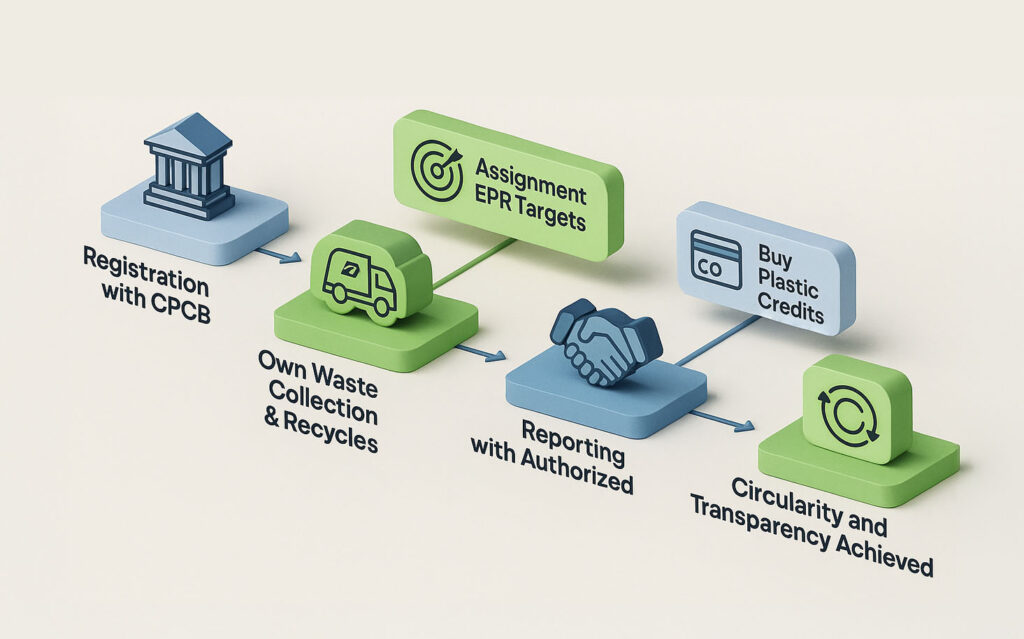
India’s EPR regulations are category-specific and aimed at simplifying accountability and implementation. EPR guidelines India have advanced from policy templates to meet the waste management requirements of the nation.
Some of the major elements of the EPR guidelines India are:
Registration
Producers, Importers, and Brand Owners (PIBOs) need to register with the Central Pollution Control Board (CPCB).
EPR Targets
Firms are given individual targets for collection and processing of waste depending on the amount they bring to the market.
Plastic Credit System
According to plastic EPR guidelines India, companies have the option to fulfill requirements by purchasing credits from approved recyclers.
Reporting Mechanism
Online portals have to be regularly filled in by sending progress reports.
Partnership with Authorized Recyclers
Authorized processors and recyclers have to be accredited by the CPCB/State Pollution Control Board (SPCB) to be part of the EPR loop.
These are suggestions that maximize traceability and transparency but above all make circularity the norm.
Regulatory Framework and Compliance
India’s Extended Producer Responsibility laws function on a tiered structure led by institutions like the Ministry of Environment, Forest and Climate Change, Central Pollution Control Board, and state boards.
Compliance Steps:
Step 1: Check Applicability
Check if your product falls under EPR, especially under the plastic EPR rules -plastics, e-waste, tyres, or batteries-is eligible under EPR.
Step 2: Register with CPCB/SPCB
Register on the EPR portal and upload the documents enumerated.
Step 3: Construct an EPR Action Plan
Specify how you’ll gather waste, any collaborators, and establish specific deadlines.
Step 4: Achieve Collection Targets
Gather or recycle a minimum of the weight or volume you committed to.
Step 5: File Reports
Maintain current records and submit quarterly and yearly returns timely.
Collectively, these regulations including plastic EPR rules instill equitable competition and ground India’s efforts towards a cleaner world.
Comparative Analysis with Global EPR Systems
While EPR regulations in India are still in the consolidation phase, many countries have had structured EPR systems for decades.
Comparison Table:
Country | Key Feature | Mandatory Sectors |
India | Digital tracking + plastic credit system | Plastics, Batteries, Tyres, E-Waste |
EU | Robust collection networks + tax incentives | Packaging, Electricals, Textiles |
Japan | Industry-led compliance bodies | Packaging, Appliances |
Canada | Producer Responsibility Organizations (PROs) | Plastics, Paper, Electronics |
The Indian system aligns itself with global best practices but faces unique challenges like informal sector integration and infrastructural limitations. Nonetheless, EPR guidelines India are rapidly evolving.
Future of EPR Regulations in India
The future of India’s EPR regulations will be influenced by growing technology integration, transparency, and scalability. Future trends suggest
AI & Blockchain Integration
For real-time waste tracking and digital evidence of compliance.
Widening Categories
Potential addition of textiles and pharma waste.
Incentive-Based Recycling Models
Aligning recyclers’ efforts with financial rewards.
Increased Public Disclosure
Annual EPR performance of PIBOs to be published.
Unified Compliance Platforms
Single-click data integration for all types of waste for centralized tracking.
India’s extended producer responsibility EPR norms are likely to become more comprehensive and robust as the nation strives to meet Sustainable Development Goals (SDGs).
Conclusion
India’s decision on the implementation of Extended Producer Responsibility (EPR) rules promotes greater responsibility, and thinking about production and consumption, with a clear framework, technology support, and greater accountability around companies considering a circular economy where waste has a reuse outlet back into production.
Understanding the EPR guidelines not only helps with compliance but also sparks new ideas, lower unnecessary costs, and frame a green business brand image. As the regulation becomes stricter, and changes occur, any stakeholder who is proactive with plastic EPR and its other category-specific requirements, will contribute to rewriting India’s legacy to a promising one.
To read more about the benefits of obtaining EPR Benefits of Obtaining CPCB EPR Authorization for Plastic Waste
FAQ's
Are EPR regulations the same globally?
No. While the core principle of extended producer responsibility remains, countries differ in implementation strategies, sectors covered, and compliance systems.
Who is responsible under EPR regulations in India?
Producers, Importers, and Brand Owners (PIBOs) are the primary stakeholders responsible for collection, recycling, and reporting.
What are the penalties for violating EPR regulations?
Non-compliance can lead to monetary penalties, suspension of operations, and cancellation of licenses by CPCB or SPCB.
What is the legal basis for EPR regulations in India?
The legal framework is guided by the Environment Protection Act, 1986, and specific rules like Plastic Waste Management Rules, 2016 (amended) and E-Waste Management Rules, 2022.
Making recycled packaging the norm.
CITATIONS:
- Introductions : Sachin-Autify. (2025b, May 9). Navigating India’s EPR Regulations: Compliance Made Easy . Autify Network. https://autifynetwork.com/navigating-indias-epr-regulations-compliance-made-easy/
- Key components : Singh, S. G., Chandra, A., Biswas, A., & Centre for Science and Environment. (2024). Unpacking EPR for plastic packaging in India (R. Sengupta, Ed.). Centre for Science and Environment. https://www.breakfreefromplastic.org/wp-content/uploads/2024/11/http___cdn.cseindia.org_attachments_0.31282200_1730173267_unpacking-epr-for-plastic-packaging-in-india.pdf?utm_
- Future of EPR : Sachin-Autify. (2025b, June 27). The Future of EPR: Emerging trends and predictions . Autify Network. https://autifynetwork.com/the-future-of-epr-emerging-trends-and-predictions/
- Comparative analysis : Portugaise, M. K., Jóhannsdóttir, L., & Murakami, S. (2023). Extended producer responsibility’s effect on producers’ electronic waste management practices in Japan and Canada: drivers, barriers, and potential of the urban mine. Discover Sustainability , 4(1). https://doi.org/10.1007/s43621-023-00124-y

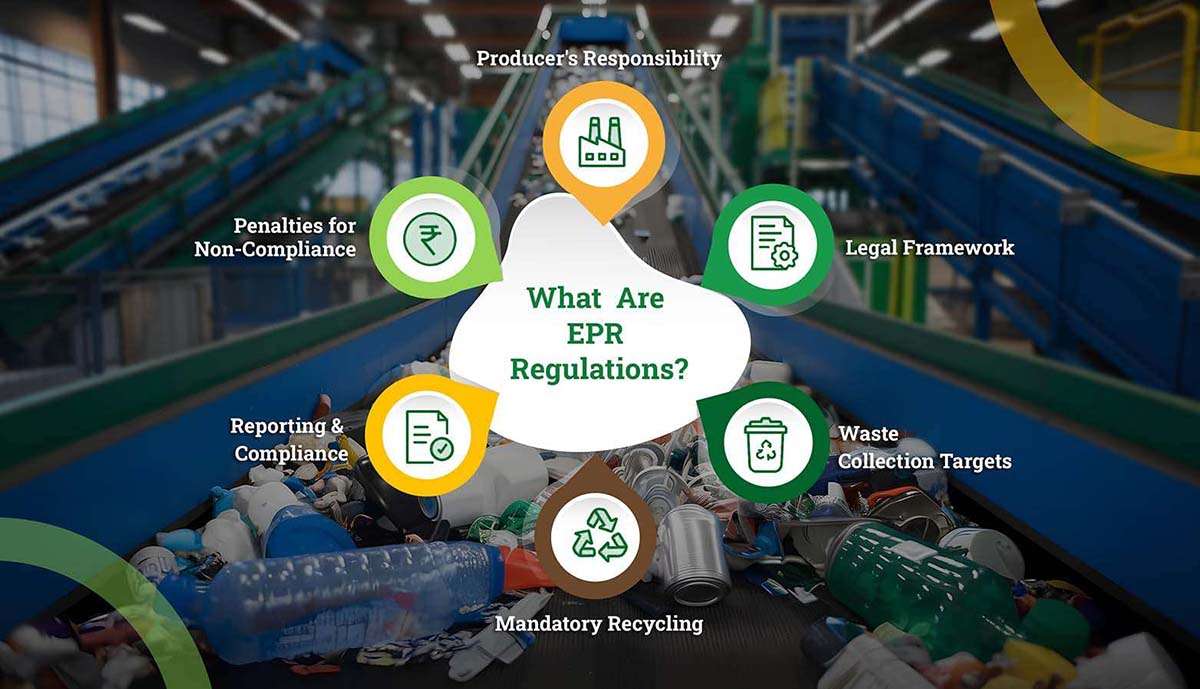
 Why “Design For Recycling” Matters for Companies
Why “Design For Recycling” Matters for Companies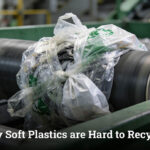 Why Soft Plastics Are Problematic & Hard to Recycle
Why Soft Plastics Are Problematic & Hard to Recycle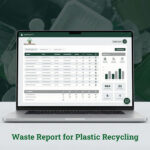 What Is Waste Reporting and Why Does It Matter in Plastic Recycling?
What Is Waste Reporting and Why Does It Matter in Plastic Recycling? What Is Bottle-to-Bottle Recycling? Why It Matters for India
What Is Bottle-to-Bottle Recycling? Why It Matters for India The Role of CSR (Corporate Social Responsibility) in Waste Management
The Role of CSR (Corporate Social Responsibility) in Waste Management